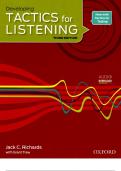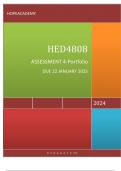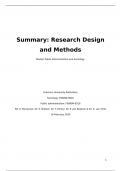Tentamen (uitwerkingen)
Test Bank for Communicate!, 16th Edition by Kathleen S. Verderber
- Vak
- Instelling
Test Bank for Communicate!, 16th Edition by Kathleen S. Verderber, Deanna D. Sellnow, Rudolph F. Verderber. Full Chapters (Chap 1 to 17 ) test bank are included with answers. Unit I: FOUNDATIONS OF COMMUNICATION. 1. Foundations of Communication. 2. Perception of Self and Others. 3. Intercultu...
[Meer zien]






